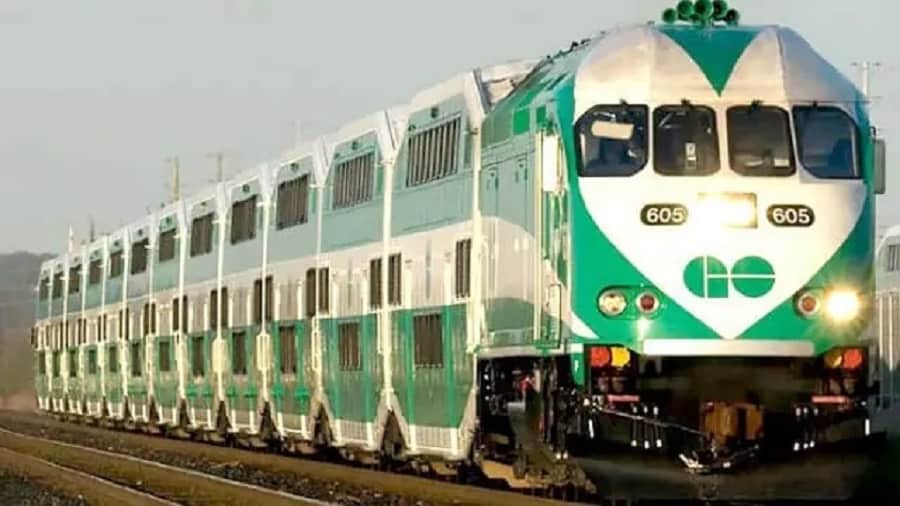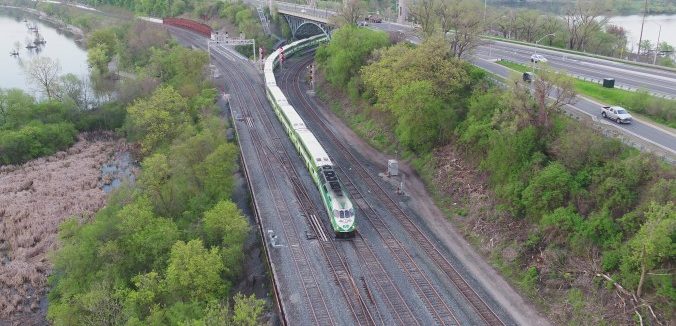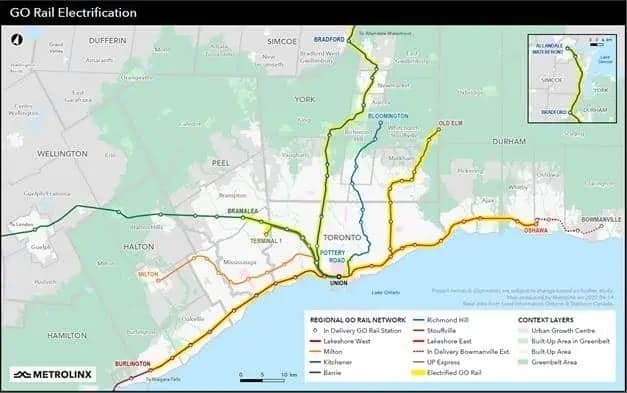‘Total transformation’ of GO from Mississauga to Hamilton is underway
Published July 21, 2022 at 1:56 pm

A multibillion dollar plan for a “total transformation” of the GO train network from Toronto to Mississauga and Hamilton is kicking into high gear, say officials overseeing the huge project.
“Now is the time the rubber hits the road,” Metrolinx president and CEO Phil Verster said this week in a news release.
Metrolinx, the provincial agency that runs GO, and fledgling company and successful project bidder ONxpress Transportation Partners are now starting into the “development phase” of the massive expansion plan that’s expected to greatly improve passenger rail service for millions of commuters across the Greater Toronto and Hamilton region.
“Throughout this two-year phase, the teams will work together to finalize the project scope, pricing, design and construction schedules. This stage is all about establishing a foundation,” Metrolinx officials said.
They add that while two years might seem a long time, it’s not a long time to accomplish what Verster describes as “a total transformation of what the GO network looks like.”
Verster met recently in Toronto with project partners to talk about next steps in what Metrolinx calls “an unprecedented transit expansion” in the region–stretching from Toronto and Mississauga west to Hamilton.
“When it’s done, this won’t be your parents’ GO train anymore,” Metrolinx officials say. “GO expansion will bring two-way, all-day GO train service across the main GO lines. There will also be faster trains and service every 15 minutes or better. It’s a project that will change the way people use transit in Canada’s most populated area.”

A new fleet of electric GO trains that can reach speeds of 140 km/h is part of the plan that will get people around the region faster.
Verster added transit is changing in a post-pandemic world and GO’s expansion plans will address new needs. He says that with the conventional workday evolving, people will need shorter, more frequent train trips daily.
Michael Keroulle, president and CEO of Alstom Americas, one of the project partners, noted that with a growing population in the region, the pressure will continue to rise for better public transit.
“You can’t just add lanes on the highway; you need something much bigger,” he said, adding GO’s ambitious expansion plans are just what the region needs.
In the meantime, project officials say, more than $10 billion of preliminary GO expansion work is already underway. That work will modernize train stations across the network, build new tunnels and bridges, and more.
The sweeping expansion plan is also expected to generate thousands of new jobs and create economic opportunities across the region, Ontario transportation ministry officials said earlier.
The project will include adding more than 200 kilometres of new track and electrifying some 600 kilometres more.
Construction is set to begin next year, with the first service upgrades to be launched sometime in 2025 or 2026.
“Transforming the GO rail network and delivering two-way, all-day service will be a game-changer for the people of the Greater Golden Horseshoe,” transportation ministry officials said earlier this year. “With quicker and more convenient ways to get from Point A to Point B throughout the region, people will thrive with easier access to home, work and recreation.”

GO rail is expected to become one of the busiest railways in North America, with more than 200 million annual riders anticipated by 2055.
Allowing seamless access to new subways, LRTs and municipal transit systems is said to be a key part of the service moving forward.
In first announcing its expansion plans last November, Metrolinx said trains every 15 minutes or sooner, more accessible stations across the map and improvements at Union Station in Toronto are also key components of the ambitious undertaking.
Essentially, according to Metrolinx, it will “rewire the region by making more trips possible on public transit, including journeys out of Toronto.”
GO’s broadening of its services is a direct result, officials say, of a growing regional economy that means more people are commuting into places that used to be seen mainly as starting points for trips. Tech companies in the Kitchener-Waterloo area, for example, are recruiting workers from Toronto “and we must give them a good train service” to that area.
In the longer term, GO will implement even more much-needed transit connections, officials say, including service to and from Pearson Airport in Mississauga.
INsauga's Editorial Standards and Policies